Tangzhong Cinnamon Rolls: An Amazing Bread Machine Recipe
Sneak Preview: These Tangzhong Cinnamon Rolls (aka Japanese milk bread cinnamon rolls) employ the Tangzhong technique and a bread machine to make a soft and fluffy sweet roll that stays fresh longer than most homemade cinnamon rolls. Mix and knead the dough in your bread machine, shape it by hand, and bake it in your conventional oven.
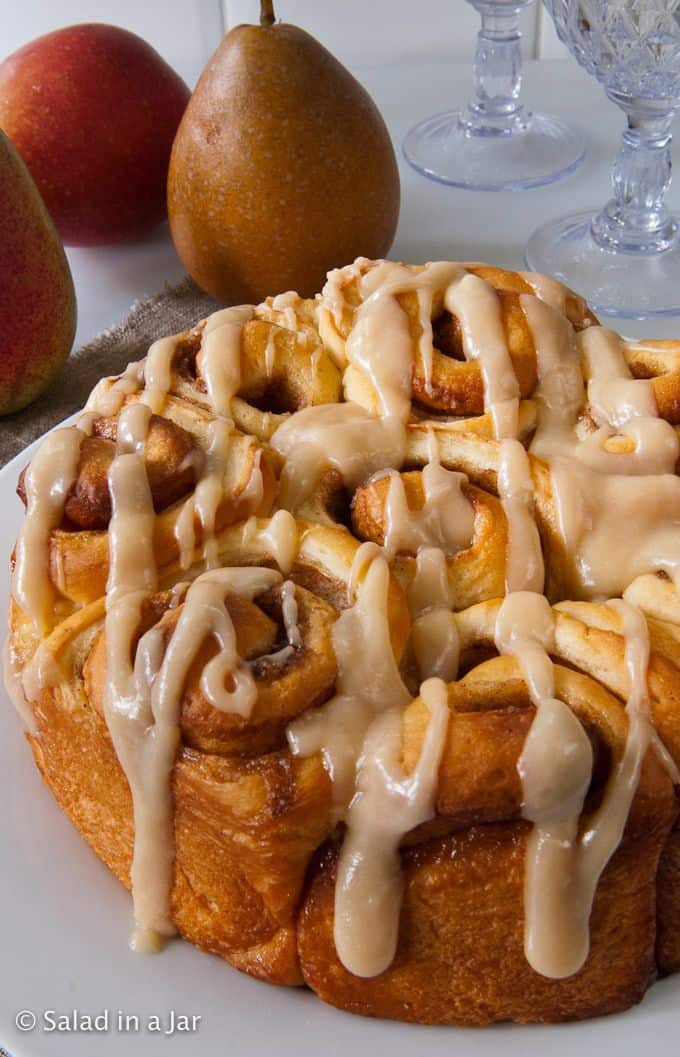
As an Amazon Associate, I earn from qualifying purchases.
Cinnamon rolls are like donuts. They taste best the day you bake them. But sometimes, you want or need to make and bake them ahead of time.
Making Cinnamon Rolls with the Tangzhong technique (aka Japanese milk bread) and a bread machine is the answer to your dilemma.
To be clear. Nothing beats a fresh-out-of-the-oven cinnamon roll. But unless you have ten hungry kids waiting to devour them before the icing sets, these are wonderful for savoring over several days.
Five reasons why this should be your go-to cinnamon roll recipe
- Using the Tangzhong technique (don’t worry about the fancy name–it’s easy) extends the shelf-life of these homemade Cinnamon Rolls longer than most homemade rolls.
- They are appropriately ooey-gooey with a lighter, flakier, and more buttery texture.
- Counterbalance all that sweetness with the spicy but not overpowering flavor of cinnamon with the tiniest pinch of ground cloves.
- Use the DOUGH cycle to make these in your bread machine. It’s the best kneading machine in town.
- No worries if you don’t have a bread machine. See directions in the recipe notes for using a stand mixer or mixing by hand.
Happy Bakers Speak Up
“I made these exactly as directed and they came out perfect. So delicious! Thanks!”–ROBERTA
What’s Different About the Method of Mixing with the Tangzhong Technique?
1. Begin by making a paste mixture using half of the milk and 2 tablespoons of flour.
This variation is called the Tangzhong technique. I use the microwave for cooking the paste because it’s quick. However, if you prefer, heat the milk and flour mixture in a small saucepan using medium heat on the stove.
It’s only one extra step. After you do it once, it won’t add much time beyond what’s required for normal cinnamon rolls
2. The Tangzhong method enables a higher ratio of liquid to flour.
Using the paste mixture made in step #1 results in a dough that needs less flour.
3. What is the purpose of using the Tangzhong method?
This method produces rolls that are softer, fluffier, and almost flaky. The simple Tangzhong technique also seems to prolong the shelf life or freshness of homemade bread which generally contains no preservatives.
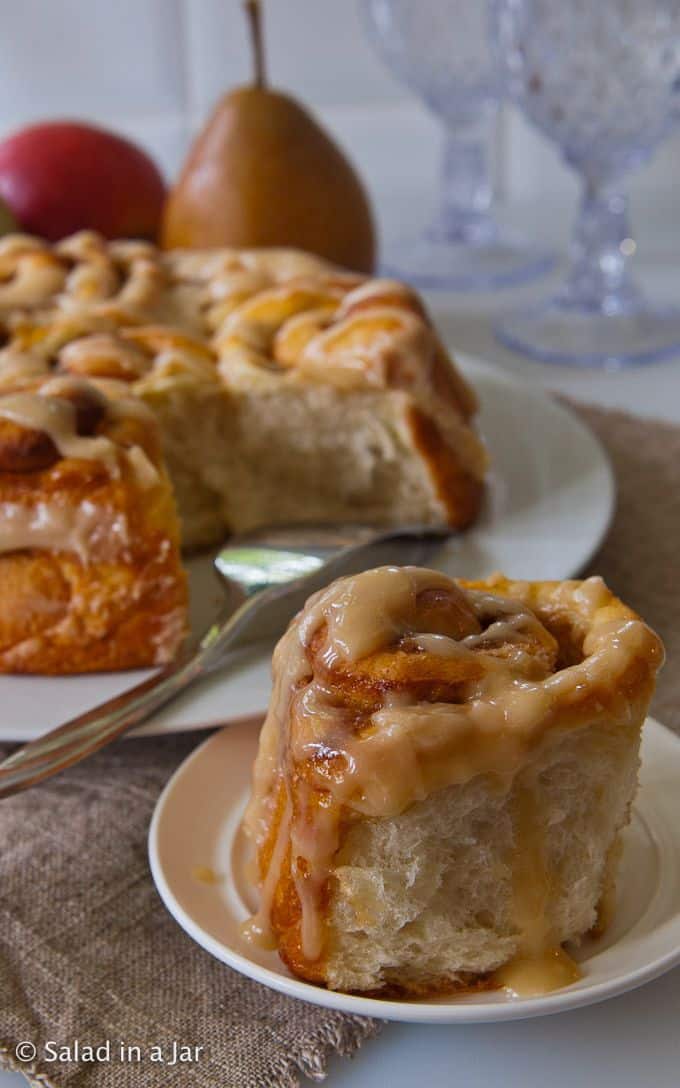
How To Mix Cinnamon Roll Dough with a Bread Machine
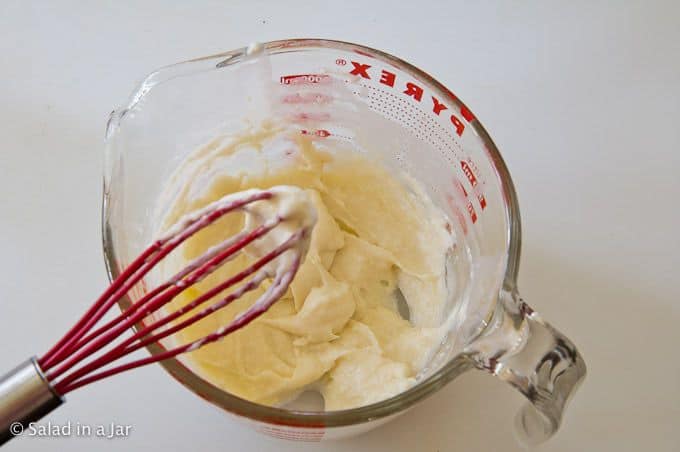
Don’t worry if there are a few small lumps. If you accidentally let it overcook into a single mass, it’s best to start over and watch it closer.
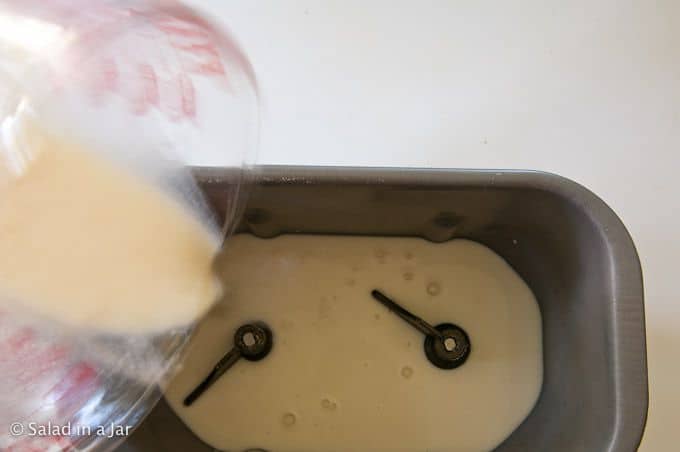
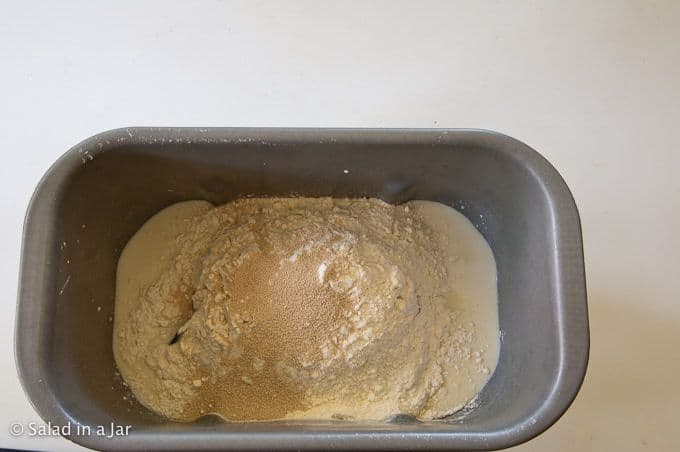
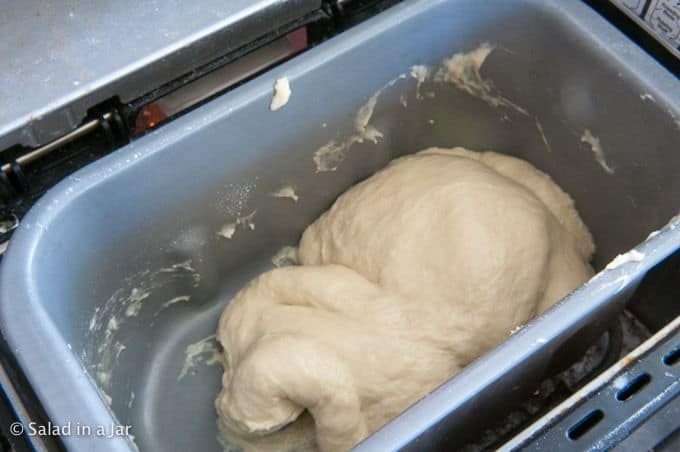
The dough should look similar to this picture when the kneading has finished.
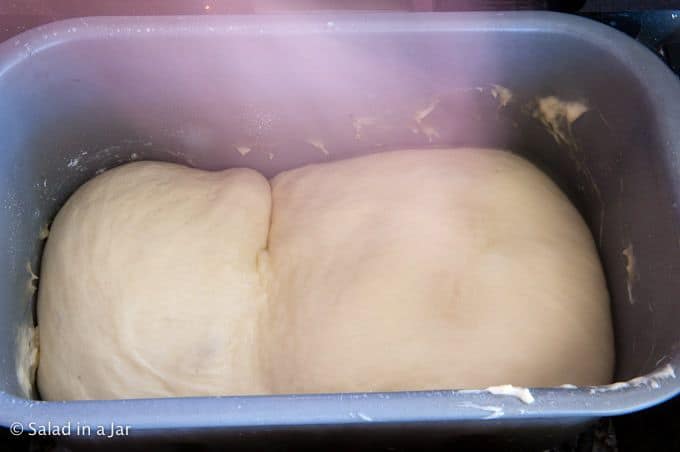
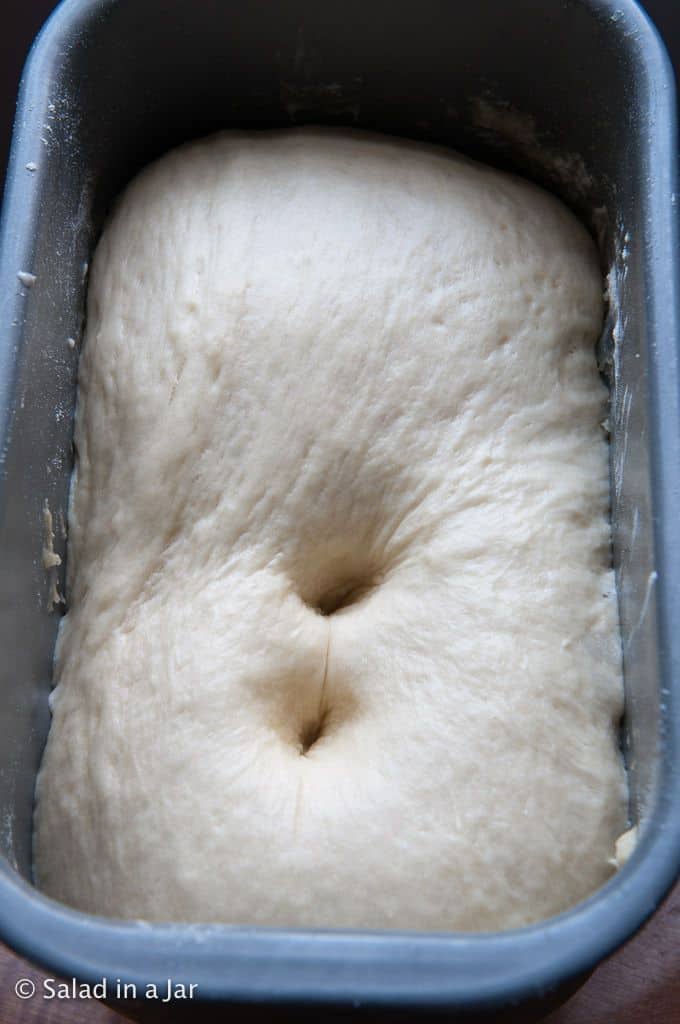
Note To New Bread Machine Users
Open the lid to your bread machine as it mixes, and take a look at the dough. Check to see if the dough has the right consistency. It should stick to the side, then release cleanly. If you want more information about this process, go here to read the secret to making better bread in a bread machine.
At first, the dough will be lumpy with a rough texture. However, after about 20 minutes of kneading, it should begin to look smoother and more elastic.
If it is too slack, add additional flour one tablespoon at a time. Likewise, if it is too dry, add more milk or cream, one tablespoon at a time. Allow the dough to absorb one tablespoon of flour or liquid for a few minutes. Then, look at the dough again to recheck the appearance of your dough.
Checking on the dough is VERY IMPORTANT to your success with bread in general, but especially with a bread machine.
How To Roll Out Cinnamon Rolls
Nothing new here. This method is the traditional way to roll out cinnamon rolls.
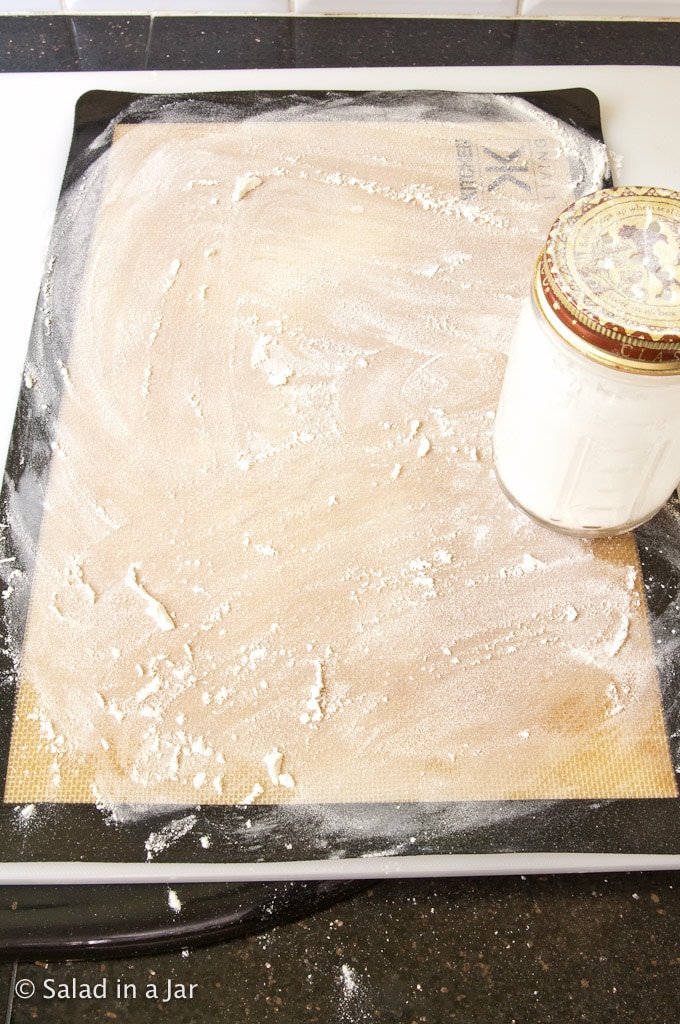
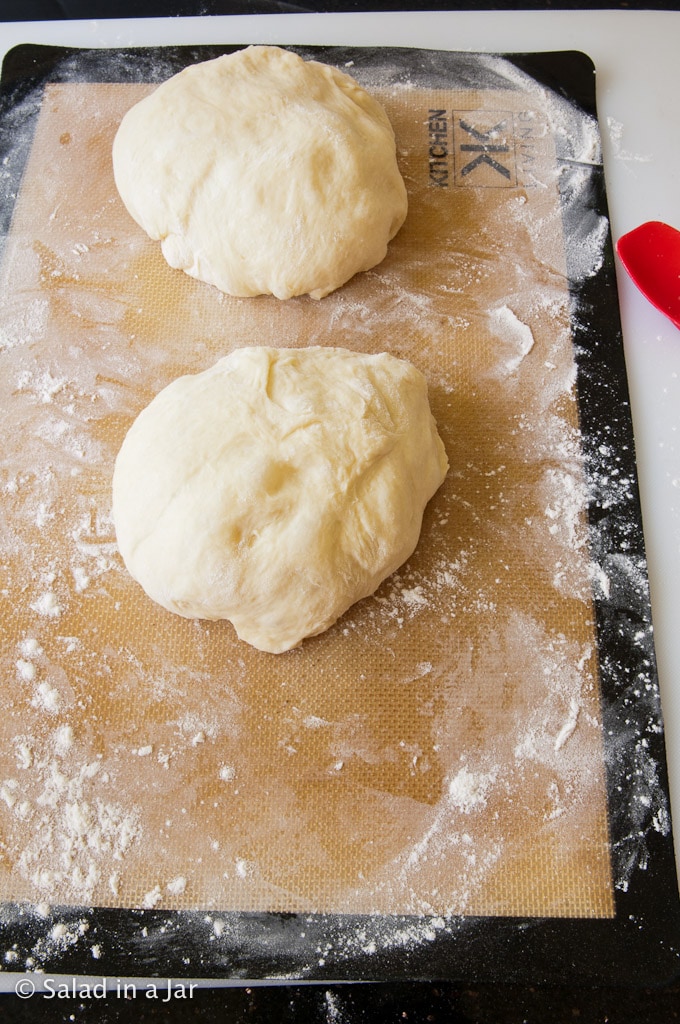
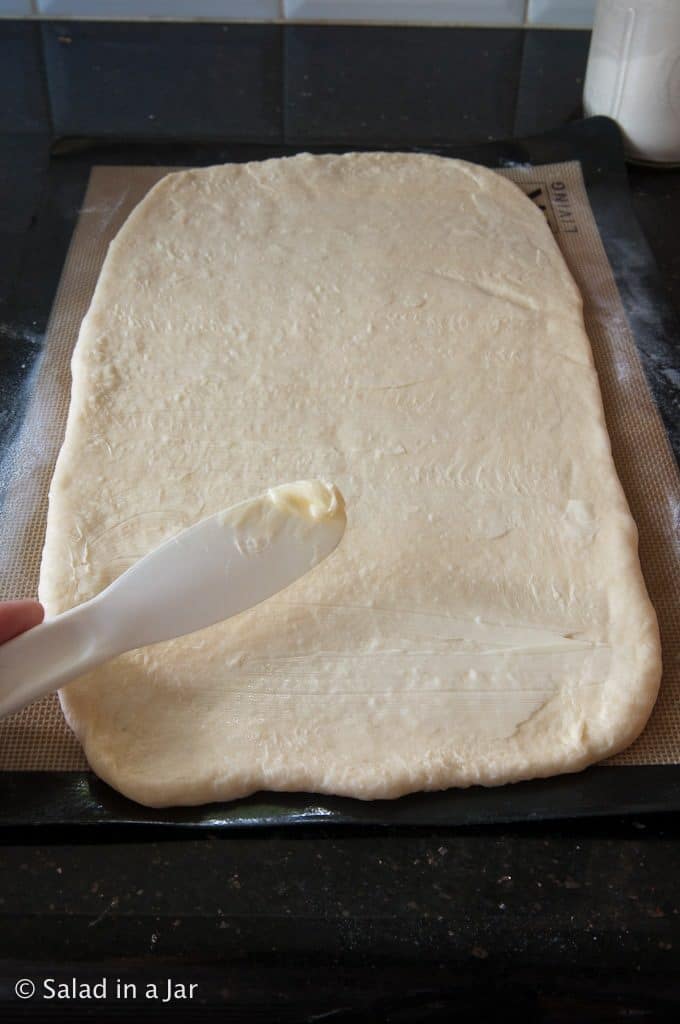
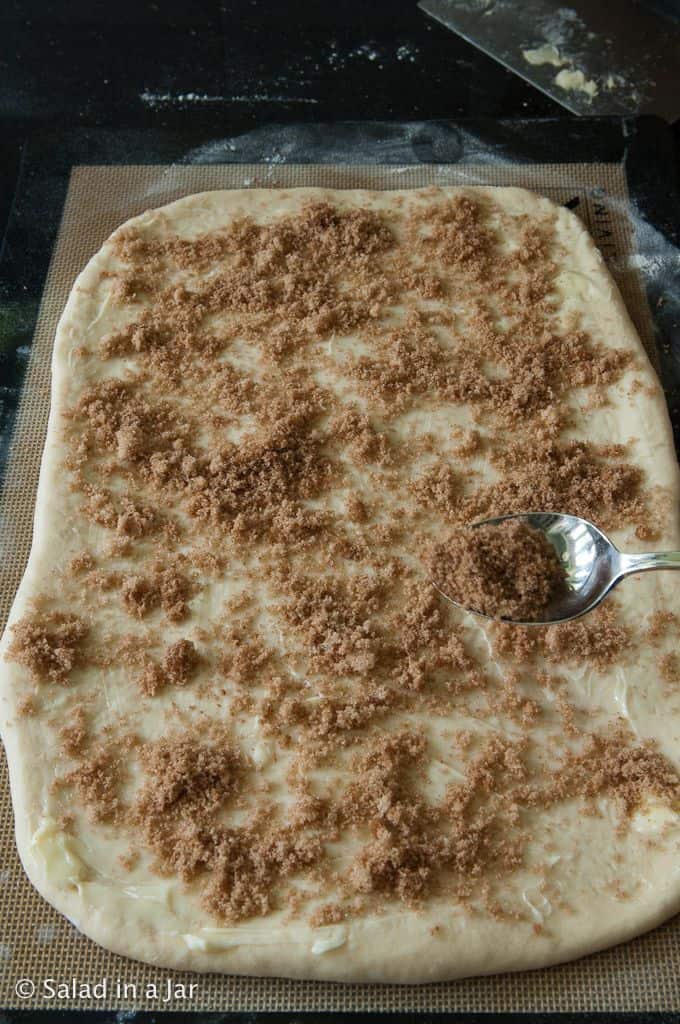
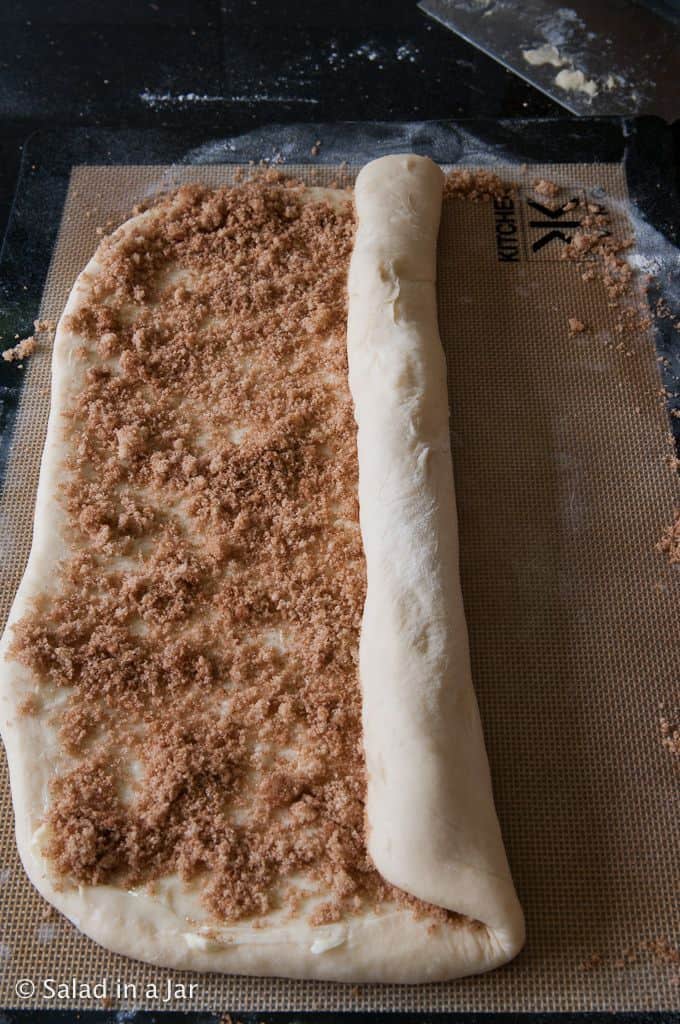
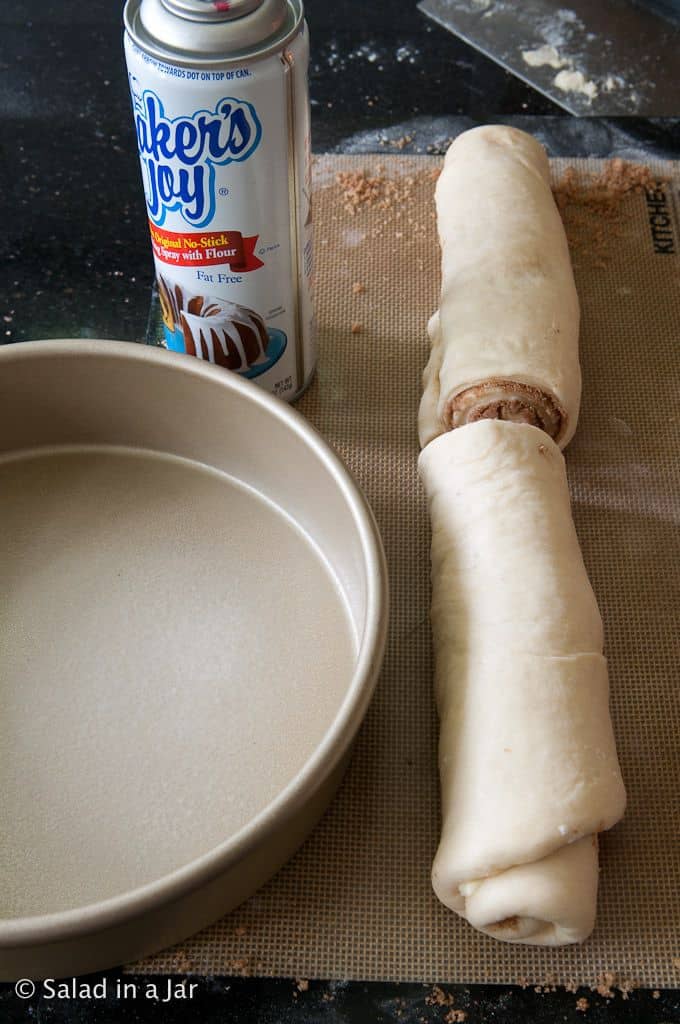
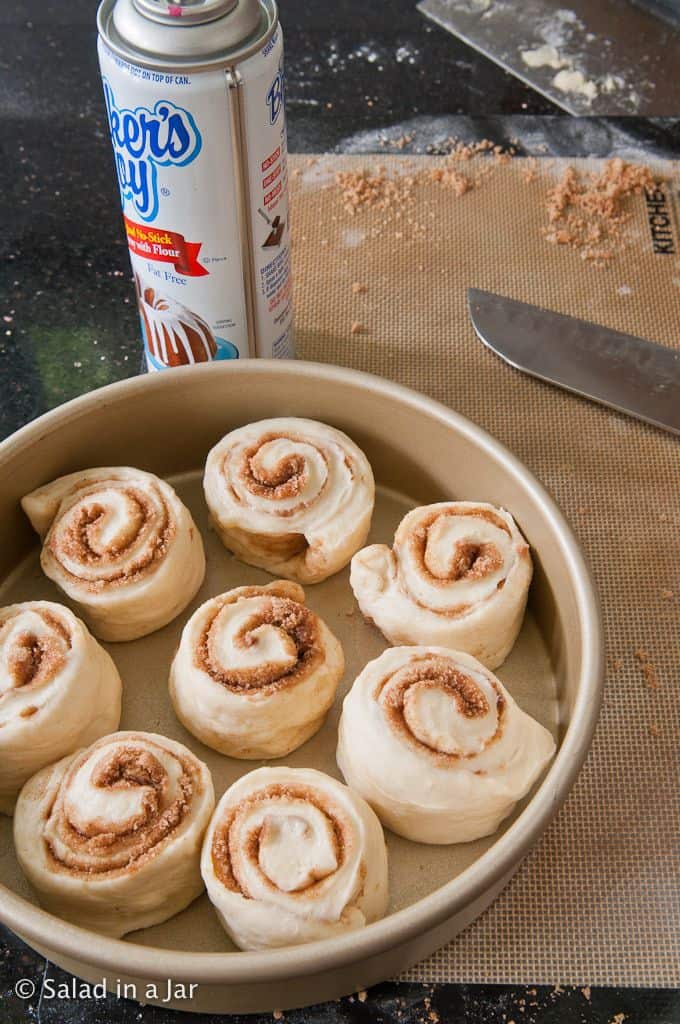
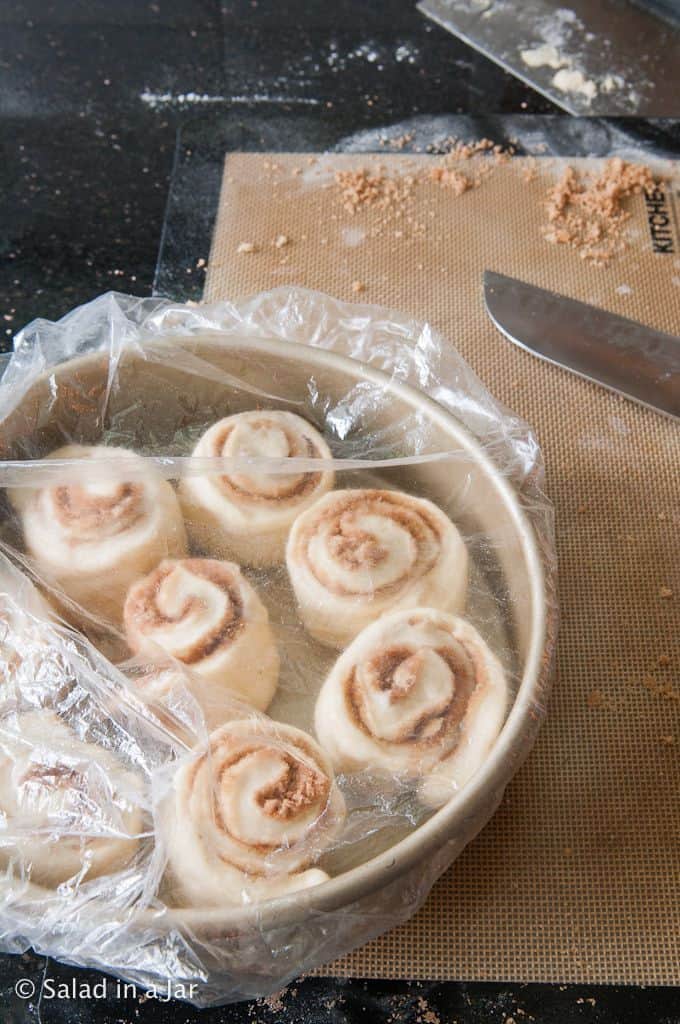
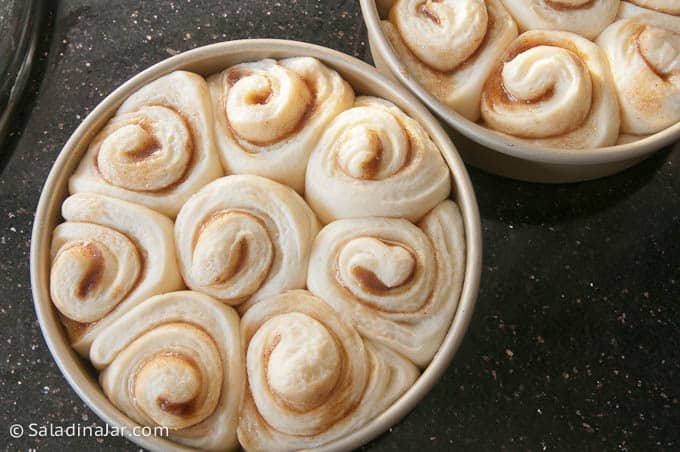
📌Kitchen Tip📌 for Rolling Out the Dough
Cleaning after rolling out dough on the counter can be such a mess! Consequently, I use a silicone baking mat. When finished, shake the mat out in the trash or the sink, then throw it in the dishwasher. Yep! That easy.
Just one caveat: If you cut on it as I do, use a light hand so you don’t slice a hole in the mat. I know, I know. Of course, the manufacturer of these mats would not endorse this practice. But I’ve been doing it for many years, and the process has not ruined a single mat.
FAQ
According to Wikipedia, it literally means “water roux.” Tangzhong is a Chinese term. Yudane is the Japanese name for a similar technique. Japanese milk bread is a common name for bread made with either of these techniques.
In my experience, the bread machine is the easiest and most fool-proof way to get the best product. Nothing kneads better than a bread machine. In addition, the DOUGH cycle automates the mixing and kneading so you can walk away and know the machine is kneading the dough to perfection.
No bread machine? See alternate instructions for making these rolls with a stand mixer in the recipe notes.
Yes. Active dry yeast no longer needs to be dissolved. Use the same amount listed. Be aware that sometimes it can be a little slower in rising. Be patient.
Yes. After you make the dough into rolls and have arranged them in the pan, cover and refrigerate. You can also freeze them at this point. Either way, allow extra time for the rolls to come to room temperature and double (almost) in volume before baking them.
Yes. The texture will be slightly chewier. Use all-purpose flour for the tenderest rolls. Also, the amount of liquid you need may vary if you use bread flour. Be sure to check the moisture of the dough as it’s kneading.
First, weigh the flour instead of using measuring cups. People who don’t weigh the flour nearly always add too much flour. Second, check the moisture of the dough while it kneads in the bread machine. It should stick to the sides, then pull away cleanly. Third, use a quick-read thermometer(paid link) to know for sure when the rolls are done. The internal temperature should reach 190˚F. Be careful not to take the temperature in the gooey filling, which will read hotter.
Yes. Freeze the unshaped dough as soon as the DOUGH cycle ends. Alternatively, freeze the shaped rolls before the final rise. Double wrap and store it in the freezer for up to a month.
When ready to use, let the dough thaw and shape the rolls. Allow a final rise before you bake them. If you freeze shaped rolls, allow them to thaw and become puffy before baking them as directed.
Yes. Double-wrap and eat them within a month. The rolls will taste pretty good if you zap them briefly in the microwave and eat them immediately.
Parting thoughts: Are you wondering if these cinnamon rolls are worth the bit of extra trouble? I think so. To me, Tangzhong cinnamon rolls have a better texture and flavor than most cinnamon rolls. However, we all have different tastes, standards, and priorities. So, if you want a more straightforward recipe, try my original cinnamon roll recipe.
Recipe Help at Your Fingertips: For questions or suggestions, email Paula at saladinajar.com. If you need help, I’m happy to troubleshoot via email (faster than leaving a comment). Attach pictures and as many details as possible for the best advice.
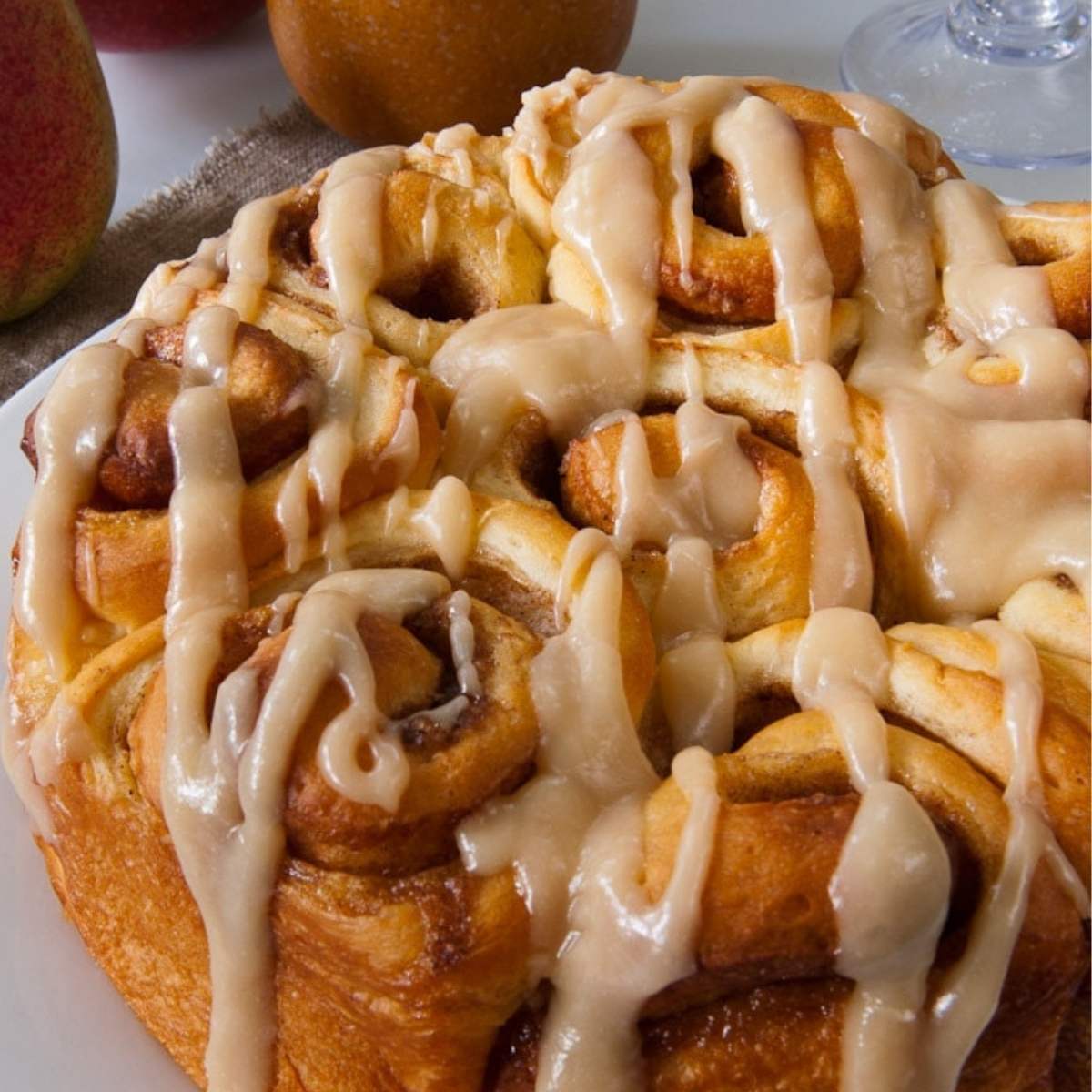
Terrific Tangzhong Cinnamon Rolls from Your Bread Machine
Rate this recipe
(5 stars if you loved it)
Video
Ingredients
Tangzhong Paste:
- ½ cup (113 g) whole milk
- 2 tablespoons (15 g) unbleached all-purpose flour
Dough:
- ½ cup (114 g) cool milk
- 1 large (50 g) egg
- 1 tablespoon heavy cream OR 1 egg yolk
- 1 tablespoon sugar
- 1¼ teaspoon table or sea salt
- 4 tablespoons (57 g) unsalted butter
- 2¾ cups (330 g) unbleached all-purpose flour
- 2 teaspoons bread-machine or instant yeast
Filling:
- 4 tablespoons (57 g) unsalted butter
- ¾ cup (160 g) brown sugar
- 1 teaspoon cinnamon
- pinch ground cloves
- ½ cup (57 g) chopped pecans (optional)
Glaze:
- 2 cups (227 g) powdered sugar
- 2 tablespoons coffee leftover or instant coffee is good or use milk
- 1 ounce (28 g) softened cream cheese
Instructions
Make the Tangzhong paste:
- Measure ½ cup (113 g) whole milk into a 2-cup microwave-safe measuring cup. or Pyrex bowl. Whisk in 2 tablespoons (15 g) unbleached all-purpose flour. Cook on HIGH in a microwave for 45-60 seconds (microwaves vary), whisking every 15 seconds until thickened like pudding.
Dough:
- Add ½ cup (114 g) cool milk to the Tangzhong paste, and whisk energetically. It’s OK if there are still some lumps. They will disappear in the mixing process. Add to the bread machine pan.
- Add 1 large (50 g) egg, 1 tablespoon heavy cream OR 1 egg yolk, 1 tablespoon sugar, 1¼ teaspoon table or sea salt, 4 tablespoons (57 g) unsalted butter, 2¾ cups (330 g) unbleached all-purpose flour, and 2 teaspoons bread-machine or instant yeast to the pan. Select the DOUGH cycle. Press “Start.”
- Open the lid and check to ensure the paddles are engaged, and the dough starts clumping.
- Recheck 12-15 minutes later to ensure the dough is the correct consistency. It should stick to the side, then pull away cleanly.If the dough is too dry, it may thump against the side of the pan or ride around freely on top of the post. Add milk 1 tablespoon at a time. If the dough is too wet, impossibly sticky, and won’t pull away from the sides, add flour 1 tablespoon at a time. Give the dough time to absorb the flour or milk between each addition.Find out more about this surprising secret to success with a bread machine here.
- When the DOUGH cycle finishes, check to see if the dough has risen to double its original size. If so, remove it to a floured surface. If not, allow the dough to remain in the machine until it is double, then remove and proceed with the next step.
Shaping the rolls:
- Remove it from the bread pan, push down gently and divide dough in half. On a generously floured surface, roll each half into a rectangle size about 13 x 10 inches.
- Spread each rectangle with approximately 4 tablespoons (57 g) unsalted butter (2 tablespoons for each rectangle) or heavy cream.
Filling:
- Mix ¾ cup (160 g) brown sugar, 1 teaspoon cinnamon, and a pinch ground cloves
- Distribute half of this mixture over first rectangle and half over the second. Sprinkle about ½ cup (57 g) chopped pecans (divided) over the brown-sugar/cinnamon layer.
- Roll up dough the long way. Slice into 8 equal pieces. Place cut side down into greased 8-inch pan or glass dish.
- Cover and let rise until almost double in a warm, moist place. Rolls should be touching each other when they have proofed enough.
- About 15 minutes before rolls are ready to bake, preheat the oven to 375˚F (190˚C).
- Bake rolls for about 20 minutes or until golden brown and the interior temperature reaches 190˚F (88˚C).
Glaze:
- Ice with 2 cups (227 g) powdered sugar mixed with 2 tablespoons coffee and 1 ounce (28 g) softened cream cheese. Depending on how thick you like your icing, you may need more or less liquid.
Notes
- You only need a pinch of cloves. But don’t overdo it because that stuff is potent. (You can leave it out, but then your cinnamon rolls won’t be as special. Promise!)
- Substitute milk or cream for coffee in the icing if you don’t have or like coffee. The coffee taste is unidentifiable, but it sure is GOOD! It makes for a nice caramel color, too.
- To make this recipe in a heavy-duty stand mixer: Add ingredients to the bowl in the same order. Turn on LOW to mix until all ingredients are moistened. Then, using a dough hook, turn the speed to 2 or 3. Continue beating/kneading until dough becomes smooth and elastic (about 5-10 minutes). Cover and allow to rise in a warm place. Deflate dough gently and shape as indicated in the recipe.
- If making by hand: Combine all ingredients into a shaggy ball in a large bowl. Turn dough out onto a floured surface. Knead with your hands until the dough becomes smooth and elastic. Kneading will likely take 10-20 minutes, depending on your experience. Place the dough ball into a greased bowl. Cover and allow to rise until double. Deflate the dough gently and shape as indicated in the recipe.
- Please note: If you only have active dry yeast, use 1/4 teaspoon more than called for in the recipe. It no longer needs to be dissolved first, but you can if you prefer.
Equipment
Nutrition
All images and text ©️ Paula Rhodes for Salad in a Jar.com

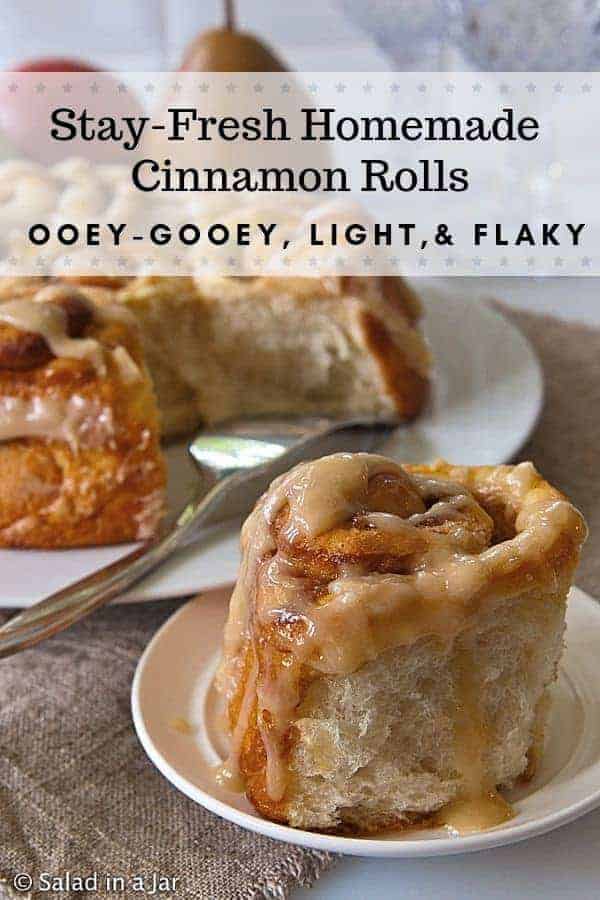

Paula Rhodes, owner
As a retired home economist, I created Saladinajar.com to share my belief that you don’t have to be a chef to find joy in creating homemade food worth sharing. Bread machines (used in an unconventional way), homemade yogurt, and quick microwave recipes are my specialty.